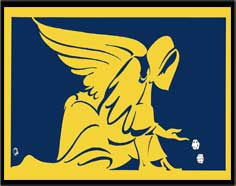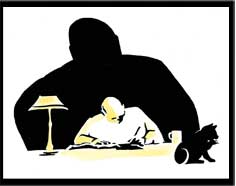McPherson was a standover man who probably committed or commissioned more murders than any other major organised figure. He did less than other crime bosses to avoid publicity, and was referred to in the media as Mr Big and less often as “Mr Ten Percent”.
Born in 1921, McPherson was convicted of various crimes as a boy and sent to a juvenile prison. He grew up a man of violence who was also intelligent, and worked fore a while for Fred Anderson, the most influential of Sydney’s major criminals.
When he went out on his own, McPherson was a major informer to police, trading information for protection, for himself and crooks who paid him. His main contact was the state’s most powerful detective Ray Kelly, who had a network of friends in high places.
In 1959 McPherson was charged with murdering Joseph Hackett but the trial was cancelled by the attorney-general. The next year McPherson came home drunk and pistol-whipped his wife Joy, threatened to kill her, and shot up the dinner. Joy wanted to charge him with attempted murder, but after Ray Kelly mediated she dropped the idea and left Sydney.
In 1963 McPherson married again, taking time out from the reception to go out and use an Owen submachine gun to kill a man who had wounded his friend and colleague Stanley Smith. Ray Kelly conducted the police investigation into the murder and helpfully suggested it had been committed by one of McPherson’s foes, hitman Raymond O’Connor.

McPherson was able to do Kelly a big return favour in 1966 when the police were looking for Ronald Ryan, who had escaped from jail in Melbourne, killing a warder. Ryan made it to Sydney and applied for help to McPherson, who tipped off Kelly. Ryan was captured and was the last man legally executed in Australia.
The next year at the Latin Quarter nightclub, Raymond O’Connor was shot dead at a table where McPherson and his henchmen were drinking. No one – including two detectives at the venue – saw a thing, and an open finding was returned by the coroner. Soon after this, McPherson’s career received another boost when Richard Reilly, an important standover man, was murdered and had to be replaced. Kelly apparently introduced McPherson to the owners of various baccarat schools (illegal casinos) and told them he would be their new “protector”.
In 1972, McPherson was one of the crime bosses who attended a series of meetings at Karl Bonnette’s house in Double Bay. (Bonnette denies the meetings took place.) By this stage, and for the next 20 years, McPherson had a close alliance with friends George Freeman and Stanley Smith, equally violent criminals who ran their own operations but supported each other when necessary. The men worked equably with Fred Anderson, still powerful but entering his declining years. When Melbourne’s violent Toecutter Gang tried to take over protection of Sydney casinos in the early seventies, McPherson and his colleagues fought off the challenge, killing a few and forcing the others to withdraw south of the border.
A lucrative racket in the early seventies and beyond involved the poker machines that had become legal in New South Wales’ 1,500 registered clubs, and also popular in illegal clubs. This produced an enormous cash flow that criminals were often able to dip into by bribing or forcing club managers to install their machines or simply pay them a cut of the takings. (In 1985 an ambitious criminal named Tom Domican would replace McPherson’s machines in an Enmore club with his own, so McPherson and dozens of his men threw them into the street and smashed them.)
Too many bodies on the streets, McPherson once noted, was “bad for business” for the whole udnerworld. An emerging problem in the early 1970s was crazed killer John Regan. In May 1974 a three-year old boy he was looking after disappeared.
Later that year, Regan went to a meeting in Marrickville and was shot dead with three guns. There are several theories about what happened. One is that Fred Anderson lured him to a meeting with George Freeman, and several criminals shot him. Another is that corrupt police were also involved in his demise. (Another independent-minded criminal who died at a meeting arranged by police and a criminal would be Warren Lanfranchi, shot by corrupt detective Roger Rogerson in 1981.)
McPherson visited America several times and helped host visits by mafia-connected Joe Testa and Danny Stein to Australia. He went kangaroo shooting with Testa at Bourke in 1969. He had gambling, prostitution and drug interests throughout Asia, particularly in the Philippines, which he visited often.
When Fred Anderson died in 1985, McPherson arguably did become Sydney’s Mr Big, although some say George Freeman better deserved the title. McPherson continued to be assisted by his connections with police, of whom he once observed, “They’re no f—ing different to us, you know. I mean, some of them coppers are bigger crooks than we’ll ever know how to be. And they can get away with it, because they know every move that’s being made. Some of them blokes wouldn’t hesitate to blow your head off. They’ve proved it a few times.”
McPherson continued to get away with it, until in 1994 he was locked up by the National Crime Authority, for having somebody bashed in a dispute over the distribution of Jim Beam bourbon in Australia. He was offered his freedom in return for giving evidence to the NSW police royal commission, and declined. He died in jail in 1996, of natural causes.
One estimate of his estate was $10 million, but authorities found property in Queensland he had almost certainly owned worth twice that.
MAIN SOURCES: Mr Big by Tony Reeves; The Godfather in Australia by Bob Bottom; Can of Worms II by Evan Whitton.











You must be logged in to post a comment.